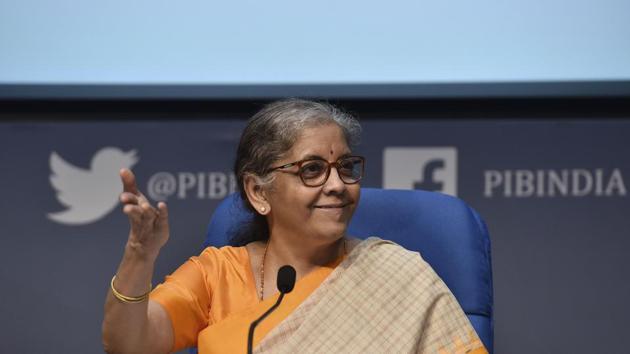All eyes on the economy | HT Editorial
The central government’s measures are positive. But are they sufficient?
Finance minister Nirmala Sitharaman announced the third Atmanirbhar Bharat package on Thursday. With the latest measures, India’s economic response — including both of the Centre and Reserve Bank of India (RBI) — to the economic disruption inflicted by the Covid-19 pandemic has reached ₹29,87,641 crore; roughly 15% of the total GDP, Ms Sitharaman said. To be sure, the actual fiscal impact on the central government’s finances is significantly less than the 15% figure.

The announcements came on a day when the two important economic numbers were announced. The Index of Industrial Production came out of contraction zone — it grew at 0.2% on an annual basis — in September for the first time since the imposition of a nationwide lockdown. The Purchasing Managers’ Index manufacturing had entered expansion zone in August and has been gathering momentum since then. To be sure, the recovery in industrial activity is not uniform. Cons-umer goods industries have shown the biggest expansion while capital goods industries are still in the contraction zone. There will be greater clarity when the second quarter GDP numbers are released later this month. India’s retail inflation, as measured by the Consumer Price Index, grew at 7.61% on an annual basis in October. This is the highest monthly growth in inflation since June 2014, the first full month after Narendra Modi assumed office. To be sure, the inflation spike is a result of seasonal shocks to food prices and the government’s taxation policy on petroleum products, rather than an overheating of the economy. While core inflation (non-food non-fuel) has shown a growth of 5.7%, non-core inflation has grown at 9.8%.
Given the fact that the government will be presenting the next Union Budget in just over 75 days, it is reasonable to assume that no significant measures will be announced before it. While there is an acknowledgement of the fact that sequential economic recovery has been gaining momentum, it remains to be seen how much of this is preserved after the festive season. Keeping food inflation under control has been one of the key political economy priorities of this government. If things do not improve quickly, there could be more curbs on both domestic and foreign trade in food items, which goes against the spirit of agricultural reforms announced earlier this year. More broadly, the government’s measures are positive — but whether they will be enough remains a big question.






